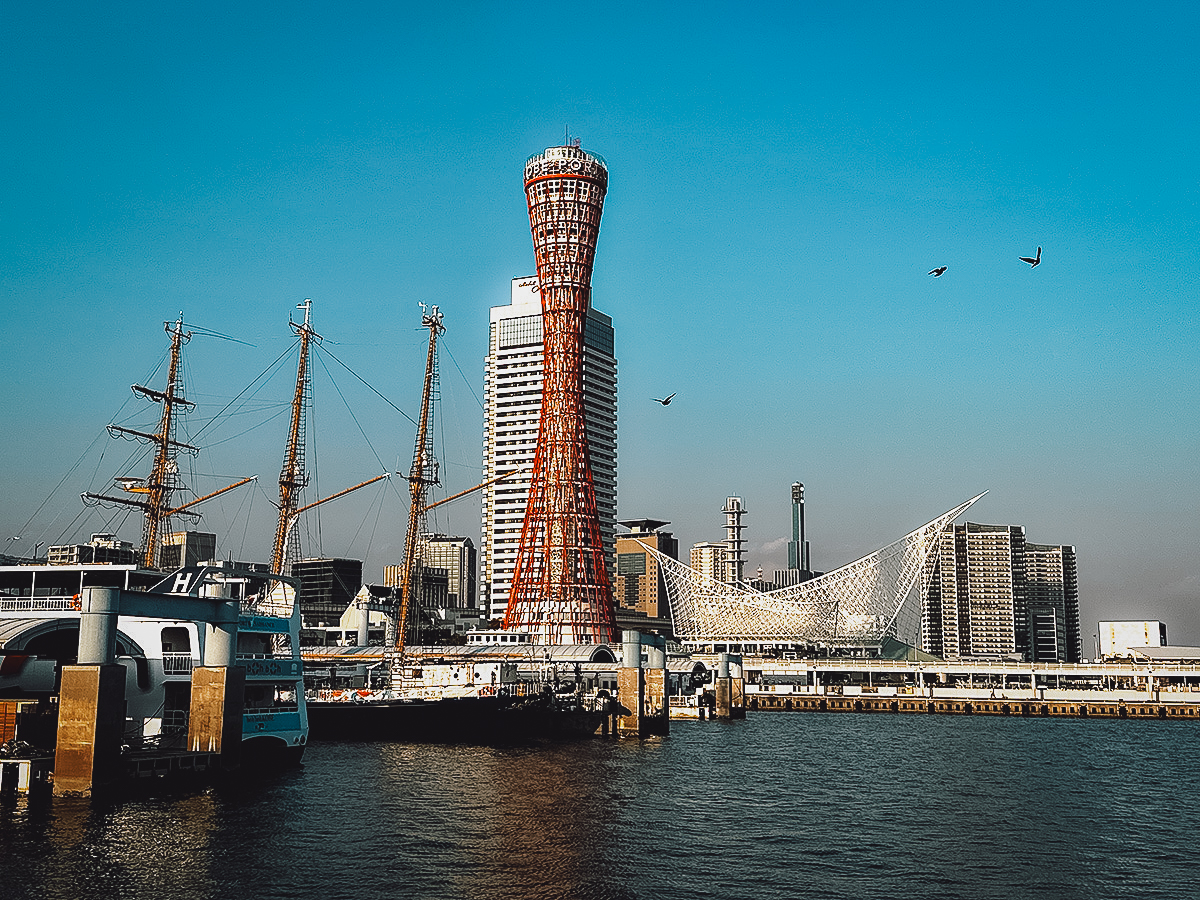SUMMARY HIGHLIGHTS
- Staying near Sannomiya Station is ideal.
- The Takenaka Carpentry Tools Museum is a must-visit.
- Only certified restaurants and shops can sell authentic Kobe Beef.
What’s the first thing that comes to mind when you think of Kobe? For the vast majority of tourists, it’s Kobe Beef. And who can blame them? It’s arguably the most famous beef brand in Japan, and for many people, a bucket-list experience.
These days, you can easily find Kobe Beef in Osaka or Kyoto. For this reason, many people skip Kobe because they don’t think it has much to offer other than its famed brand of beef. They couldn’t be more wrong.
Admittedly, I was one of those people, so I was pleasantly surprised to find what a cool city Kobe actually is. It’s cosmopolitan and laid-back, and it doesn’t get as many tourists as its more popular neighbors in the Kansai Region. Well, at least not yet, but I have a feeling that will change in the coming years.
I’ve been exploring Japan for a long time and I find Kobe to be one of the most livable cities I’ve visited thus far in the country. Spend a day here, and you may see why.
VISIT KOBE QUICK LINKS
To help you plan your trip to Kobe, we’ve compiled links to recommended hotels, tours, and other travel-related services here.
HOTELS
Top-rated hotels near Sannomiya Station, one of the most convenient areas to stay for first-time visitors to Kobe.
- Luxury: Oriental Hotel
- Midrange: remm plus Kobe Sannomiya
- Budget: HOTEL LiVEMAX Kobe Sannomiya
EXPERIENCES
- Sightseeing Tour: 1-Day Tour of Kobe
- Food Tour: Premium Kobe Beef Experience & Sake Tasting Culinary Tour
- Museum Tour: Private Tour of the Takenaka Carpentry Tools Museum
- Temple Tour: Guided Tour of Kobe’s Sumadera
- Cooking Class: Cooking Classes in Kobe/Hyogo
OTHER SERVICES
- Travel Insurance (non-US residents get 5% off)
- KIX Airport Transfer
- Kansai Area Pass
- Japan Rail Pass
- Japan eSIM
GUIDE TABLE OF CONTENTS
KOBE AT A GLANCE
Located less than an hour west of Osaka, Kobe is a port city in Hyogo Prefecture renowned for its beef. While many tourists associate Kobe with its namesake wagyu, the city has much more to offer than just A5 steaks.
Many people may not realize this, but Kobe is one of Japan’s most cosmopolitan cities. Kobe has a long history as an international trading port, and that foreign influence is still evident today in neighborhoods like Kitano-cho. Built on a hill, western-style mansions stand out, but they also blend seamlessly with the city’s modern architecture.
Beyond its cultural heritage and culinary fame, Kobe is also blessed with natural beauty. The city is sandwiched between Osaka Bay and the Rokko mountain range, making it easy to go from shopping in Sannomiya to hiking on a scenic trail, all in the same day.
Compact, laid-back, and full of character, Kobe is an easy and enjoyable city to explore. Whether you’re here for the food, the history, or just a relaxing escape from the often suffocating crowds of Namba, Kobe makes for a rewarding (and surprising) side trip.
BEST TIME TO VISIT KOBE
Like Osaka, there’s really no bad time to visit Kobe. It’s mostly an urban destination so it makes for a pleasant visit at any time of the year.
Kobe has a similar climate to Osaka, so if you’d like to visit during cherry blossom season, then plan your visit around late March to early April[1]. If autumn leaves are what you’re after, then it’s best to go between mid-November and mid-December[2].
WHERE TO STAY IN KOBE
One of my best friends is from Hyogo. When I asked him where tourists should stay in Kobe, he replied without giving it much thought, “near Sannomiya Station”. Not only is Sannomiya Station Kobe’s main transportation hub, but staying near the station will put you in the commercial heart of the city.
You can search on Booking.com or Agoda for hotels around Sannomiya Station. Here are some of the top-rated hotels in the area:
- Luxury: Oriental Hotel
- Midrange: remm plus Kobe Sannomiya
- Budget: HOTEL LiVEMAX Kobe Sannomiya
THINGS TO DO IN KOBE
Treat Yourself to Kobe Beef
I’ve learned there’s a lot more to Kobe than its famous brand of wagyu, but let’s be honest, we probably wouldn’t be talking about Kobe right now if it weren’t for Kobe Beef. It’s the most well-known Japanese beef brand outside of the country, and what largely put Kobe City on the traveler’s map.
To the uninitiated, Kobe Beef refers to meat produced from pedigreed Tajima cattle born and slaughtered in Hyogo Prefecture[3]. The meat must pass a stringent set of requirements, with only the highest grades of meat earning the “Kobe Beef” label.
Kobe Beef can be served in a number of ways – in shabu shabu, sukiyaki, burgers, and croquettes – but the best way to enjoy it is at teppanyaki restaurants, where the meat is grilled right in front of you. “Kobe Beef” is a strictly guarded trademark, so only designated restaurants and shops are allowed to label and sell their meat as authentic Kobe Beef.
Restaurant Mouriya, near Sannomiya Station, comes highly recommended, but do be warned that certified Kobe Beef doesn’t come cheap.

Go for a Walk at Nunobiki Herb Gardens & Ropeway
Set on the southern slopes of the Rokko mountain range, Nunobiki Herb Gardens and Ropeway is one of Japan’s largest herb and flower gardens. It’s accessible by ropeway or hiking trail and provides visitors with an easy escape from the city.
The grounds of the facility are quite expansive and consist of glasshouses, outdoor gardens, restaurants, shops, and an observation deck. The view of downtown Kobe is impressive during the day, but it gets even more spectacular at night.
I took the ropeway to the upper station and made my way back down on foot through the garden. What sets Nunobiki Herb Gardens apart is that it’s literally built on the slope of a mountain. Making my way down through the twisty roads of the garden felt a bit like driving down San Francisco’s famed Lombard Street.

Nunobiki Ropeway consists of three stations – lower, middle, and upper. I took the ropeway to the upper station and walked down, but you can also walk up through a forested hiking trail. Walking at a leisurely pace, the hike should take around one and a half hours.
If you choose to hike, you’ll pass Nunobiki Waterfall somewhere between the middle and lower stations.
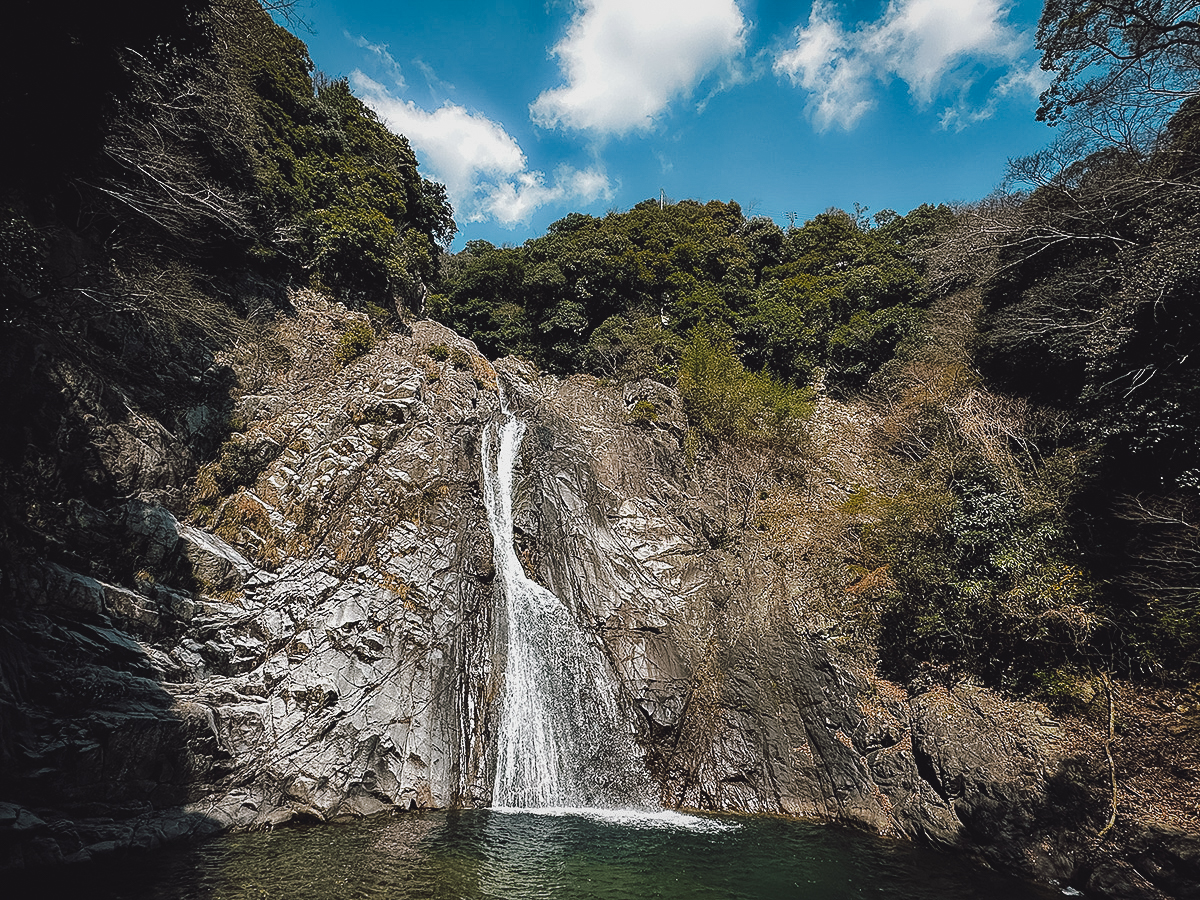
Visit the Mansions of Kitano-cho
If you have energy to spare after hiking to Nunobiki Herb Garden, perhaps you’d like to explore Kitano-cho. It’s a residential district about a 15-minute walk from the lower station of Nunobiki Ropeway.
Kitano-cho is a hilly residential district with over a dozen western-style mansions. They were the homes of foreign merchants and diplomats who settled in the area after Kobe was opened to foreign trade in the latter half of the 19th century.
Reminiscent of Glover Garden in Nagasaki, many of these former mansions have been converted into house museums, which you can visit for a fee.

Learn About the Wizardry of Japanese Wood Joinery
Kobe is home to a few museums, none more fascinating perhaps than the Takenaka Carpentry Tools Museum. My friend’s wife insisted I visit this place and it absolutely blew my mind.
The Takenaka Carpentry Tools Museum celebrates sashimono, or Japanese wood joinery. It refers to the art of assembling furniture and other objects without the use of nails, screws, or glue. If you’ve been to Kiyomizu-dera in Kyoto, then you may remember how the main temple was built using this technique.
Looking at some of the more complex interlocking pieces, it’s mind-blowing to imagine the level of precision and patience required to create objects – even large structures like temples – without nails. Japanese craftsmanship truly is astonishing.
Just a 10-minute walk from Nunobiki Ropeway, you can easily visit Takenaka Carpentry Tools Museum on your own, but it may be worthwhile to go with a guide who can explain the exhibits to you in detail.
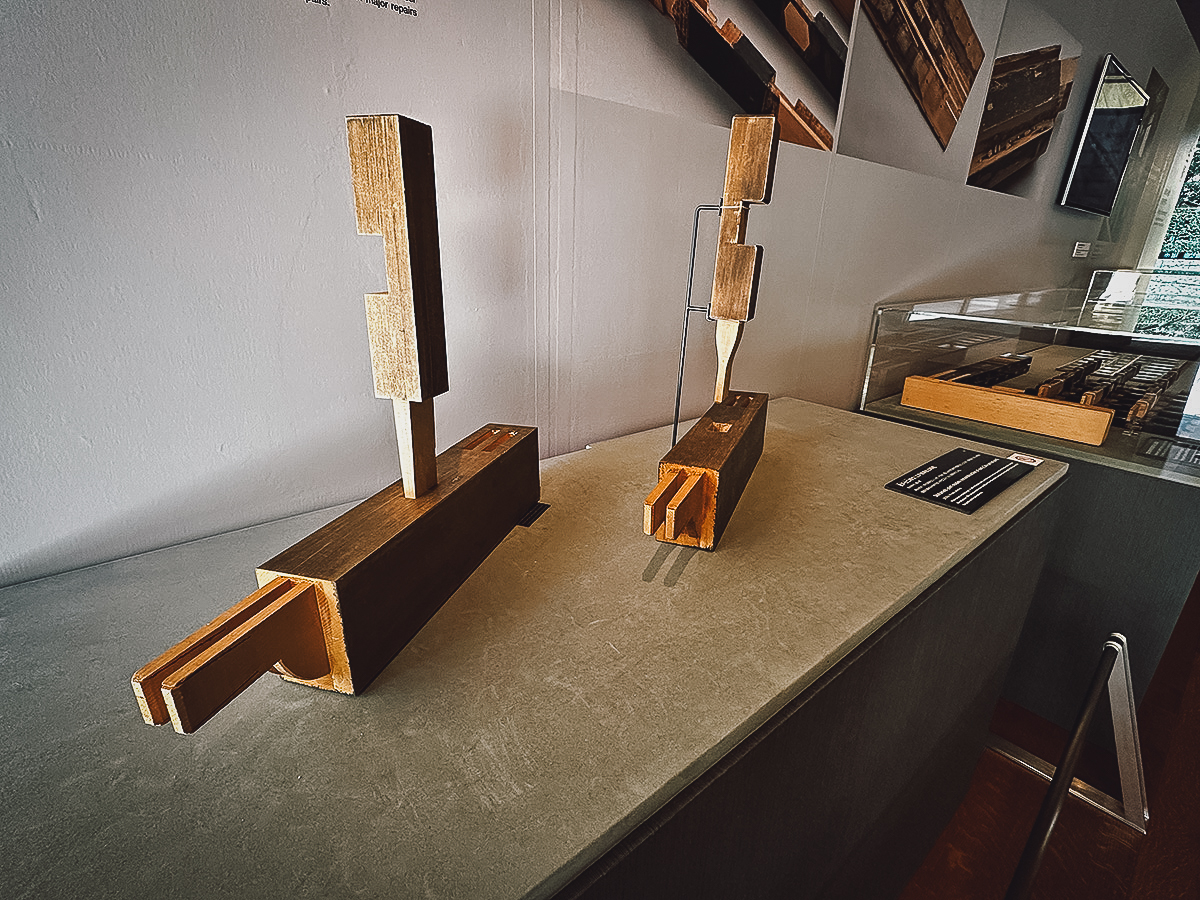
Take In the Night Views
If the view from Nunobiki Herb Gardens isn’t impressive enough for you, there are other observatories you can visit on the Rokko mountain range.
The Rokko Cablecar will take you to the top of Mount Rokko while the Maya Cablecar and Ropeway will take you to Kikuseidai, the observation deck at the top of Mount Maya. The view from Kikuseidai (pictured below) is considered one of the “Three Major Night Views of Japan”.
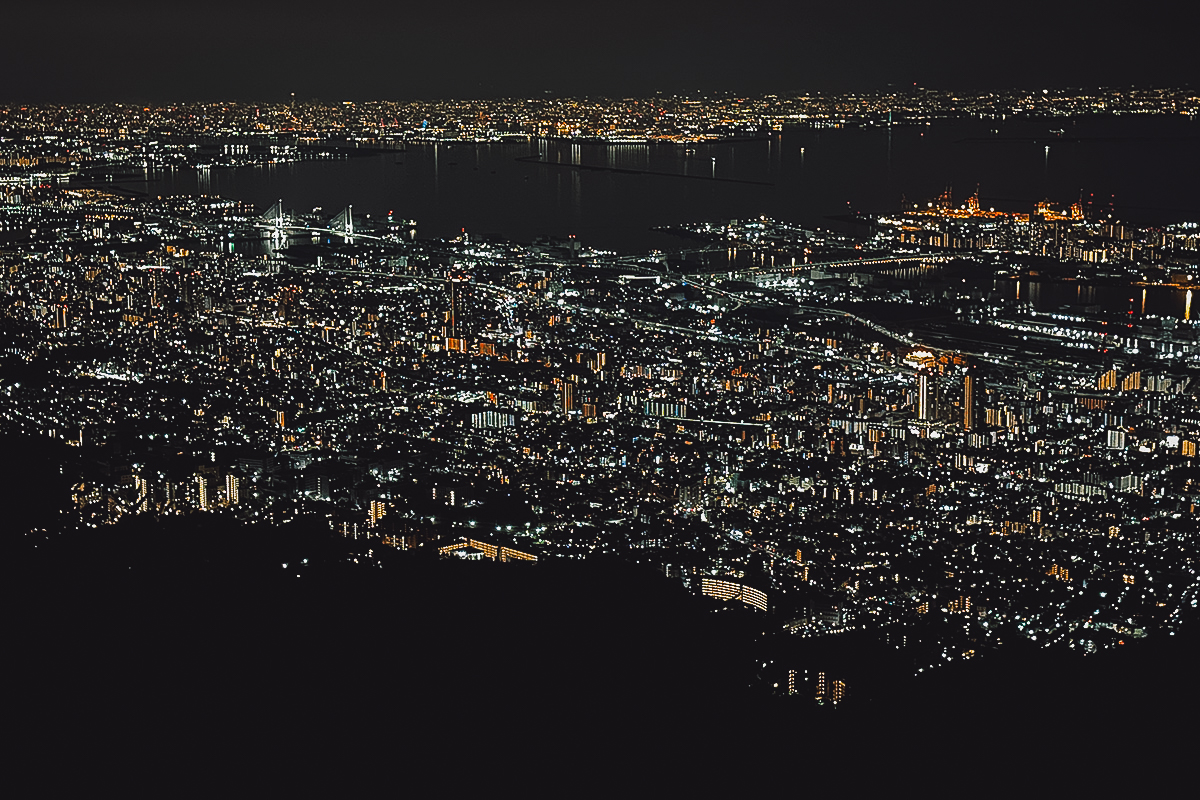
Go People Watching at the Port
I love the vibe of Kobe’s port area. The first time I went was on a Sunday, when the port was buzzing with people, and it reminded me in some ways of Fisherman’s Wharf in San Francisco. It has great energy and is a fun place to just sit and do some people-watching.
The most recognizable structure at the port is Kobe Port Tower, an eye-catching red tower that’s become an iconic symbol of the city. Located near the Kobe Maritime Museum in Meriken Park, the tower features five observatories situated roughly 100 meters (328 ft) above the ground.
If you’re hungry or in the mood to do some shopping, you can walk to the other side of the harbor to Kobe Harborland. It’s a large entertainment complex featuring a wide selection of restaurants, shops, and department stores.
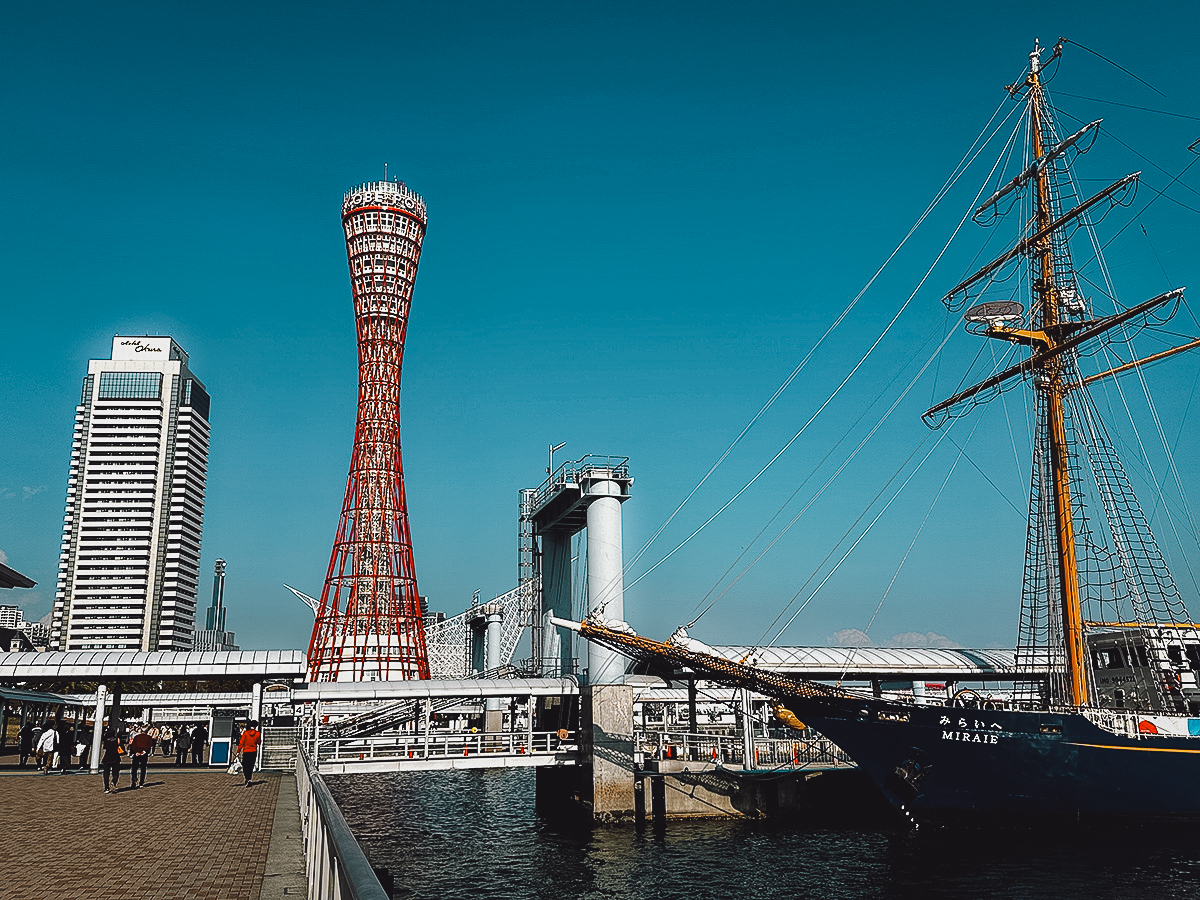
Eat Cheap Street Food in Chinatown
Known locally as Nankinmachi, Kobe’s Chinatown is a great place to get inexpensive street food like buns, dumplings, noodles, and candied fruit. It’s a relatively small Chinatown, consisting of just two main streets that intersect to form a small plaza at its center.
I went to Nankinmachi on a Sunday, and like Kobe Port, the area was humming with energy.

Go Sake Tasting in Nada
Kobe is famous for its wagyu, but did you know that it’s also known for its sake? Kobe’s Nada District is the most prolific sake-producing region in Japan, accounting for roughly 25% of total sake production in the country[4].
The Nada District stretches for roughly three kilometers and is home to many sake breweries, several of which offer tastings to the public. You’ll find a few sake museums here as well.
Nada’s breweries are easy enough to visit on your own, but if you’d like to go with a guide, then you may be interested in this premium culinary tour. It features sake tastings and a visit to a restaurant to try Kobe Beef.

Photo by Oilstreet, CC BY-SA 3.0, via Wikimedia Commons / Processed in Photoshop and Lightroom
Take a Cooking Class
If you love Japanese food and enjoy spending time in the kitchen, then you may want to take a cooking class in Kobe. I’ve taken several around the world – including one in Tokyo – and they’ve always given me a deeper appreciation for the local cuisine.
From making udon and tempura to putting together the cutest bento boxes, you’ll have dozens of cooking classes to choose from in Kobe and Hyogo on airKitchen.
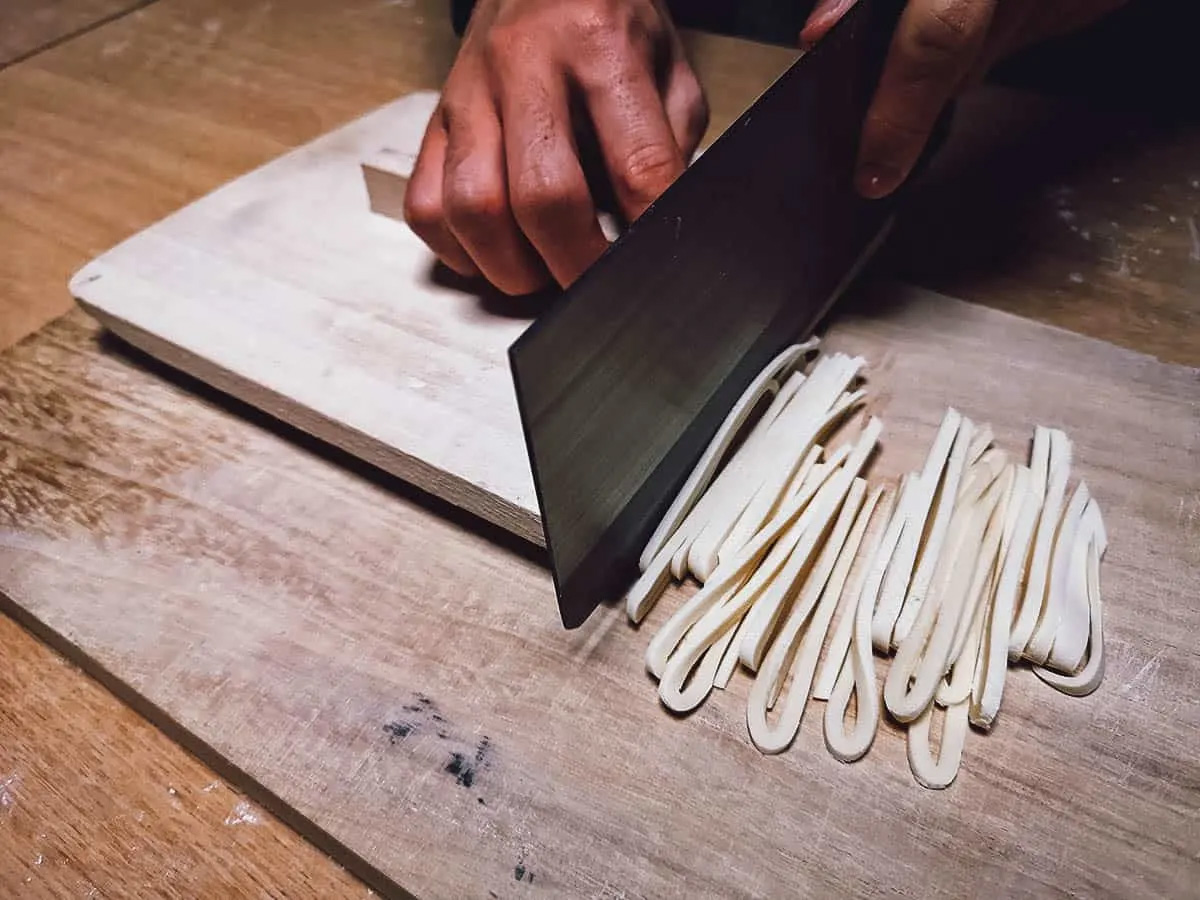
DAY TRIPS FROM KOBE
Himeji Castle
Himeji Castle is one of the most impressive castles in Japan. Nicknamed the “White Heron Castle”, it’s renowned for its size, beauty, and exceptional state of preservation.
Located in Himeji, around forty minutes west of Kobe, Himeji Castle is one of just two attractions on Japan’s inaugural list of UNESCO World Heritage Sites[5]. It’s also one of just twelve remaining original castles in Japan. While most have been rebuilt or restored due to damage from earthquakes, fire, or war, Himeji Castle has remained intact since its completion in the early 17th century.
You can easily visit Himeji Castle on your own, but if you’d prefer to go with a guide, then you may be interested in this Himeji bike tour or this private Himeji Castle night tour.
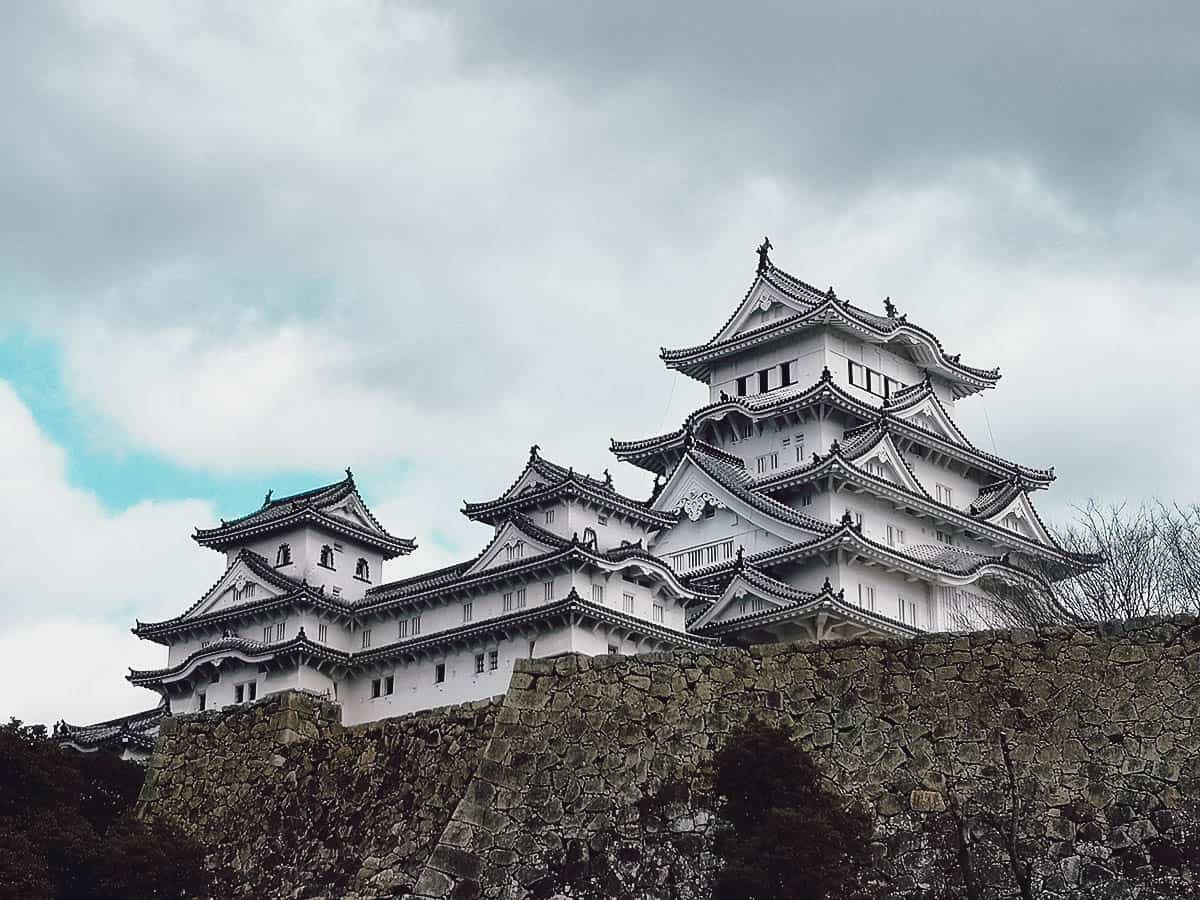
Fukusaki
If you’re planning a day trip to Himeji Castle, then you may want to continue to Fukusaki, a small town located just half an hour north of Himeji Station. In recent years, Fukusaki has garnered attention on social media for its quirky and colorful statues of yokai, the supernatural creatures, spirits, and demons from Japanese folklore.
Exploring Himeji Castle typically takes no more than 2–3 hours. You can visit the castle in the morning before heading to Fukusaki in the afternoon. It’s a fun and quirky side trip that not many tourists know about (yet).
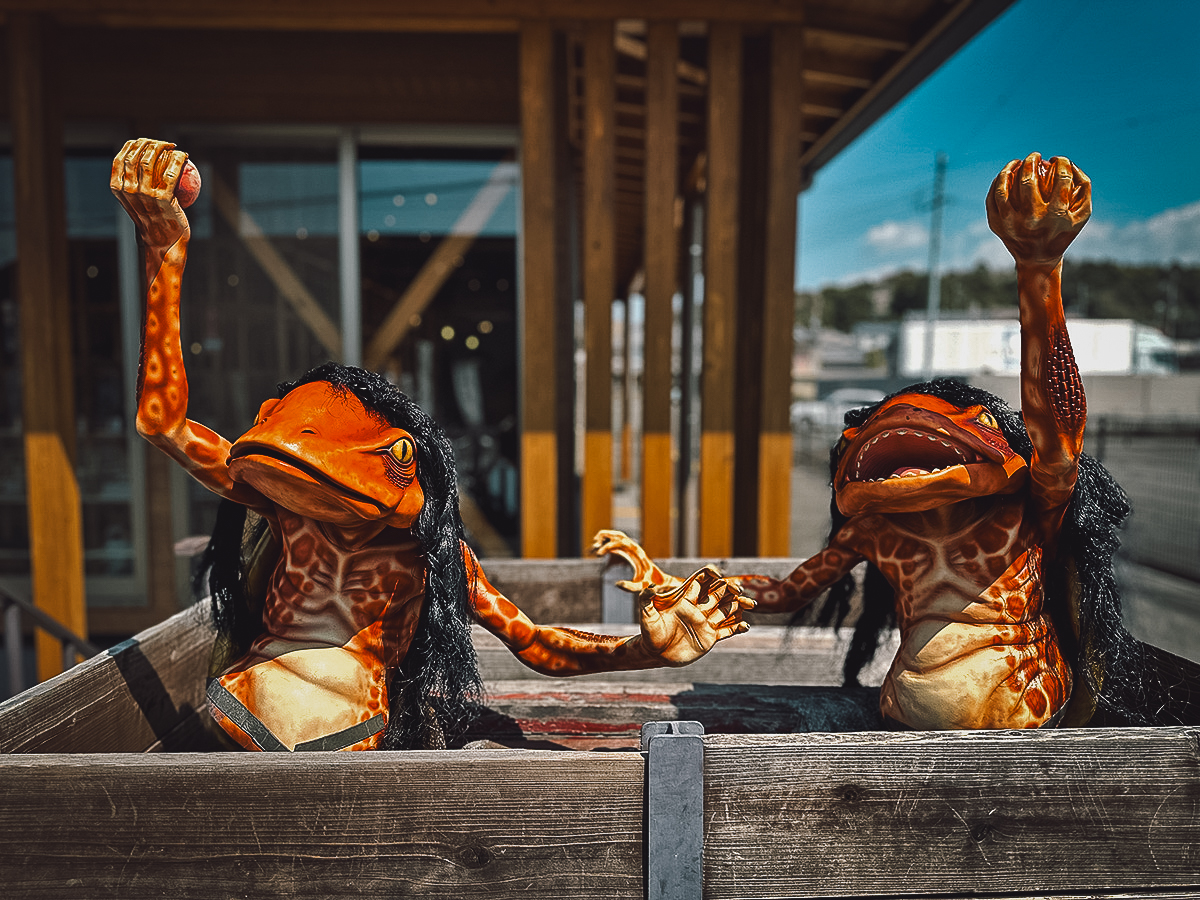
Arima Onsen
Soaking in a hot spring bath is one of my favorite things to do in Japan, especially during the colder months. I’ve yet to visit an onsen town I didn’t enjoy, but Arima Onsen stands out. It’s the only hot spring town that appears on both of these “Best of Japan” lists – three famous onsens and three ancient onsens.
Nestled in the Rokko mountains just half an hour from Sannomiya Station, Arima Onsen is a quick and easy hot spring getaway from Kobe. It has existed for over a thousand years and is known for two types of hot spring water – Kinsen (gold water) and Ginsen (silver water).
Interestingly, Kinsen has a distinctive brown color from its high iron content. I’ve been to a few onsen towns throughout Japan, but I’ve never seen hot spring water like this. Kinsen is believed to help with skin conditions and muscle pain, while the clear, radium- and carbonate-rich Ginsen is thought to relieve muscle and joint discomfort.
There are many ryokans and hotels in Arima Onsen for overnight stays, but day trippers can visit the two public bath houses in town – Kin No Yu and Gin No Yu. I suggest getting a combined ticket that gives you access to both.
Please be advised that Arima Onsen is a traditional onsen town, so tattoos are strictly prohibited at both public bath houses. Personally, I have an armband tattoo that I covered up using an adhesive bandage. It worked just fine.

VISIT KOBE FAQs
Is Kobe worth visiting?
Yes, I certainly think so, but only if you’ve already been to the major destinations in the Kansai region like Osaka, Kyoto, and Nara.
Many of Kobe’s top tourist attractions are in a relatively compact area, so it’s possible to visit on a day trip from Osaka. However, it’s a good idea to stay longer to get a better appreciation for the city. Kobe is cosmopolitan but laid back, and quite enjoyable if you explore it at a relaxed pace.
Is Kobe Beef really that good?
Yes, high-grade wagyu is incredibly tender and practically dissolves in your mouth. It’s a different experience from rib eyes or porterhouse steaks that have more bite.
Having said that, Kobe Beef and other brands of A5 wagyu may not be for everyone. Some people prefer the texture of Western-style steaks, so they may find Kobe Beef to be too soft and unctuous, especially after the first few bites.
Another thing, the difference between premium brands of wagyu isn’t easily discernible, especially to foreigners. Personally, I can’t tell the difference between Kobe, Saga, Matsusaka, Hida, and other brands of high-grade wagyu. My Japanese friend can’t either.
Is it easy to get around in Kobe?
Yes. Aside from being a very walkable city, Kobe has an excellent public transportation system. You shouldn’t have any trouble getting around.
To make commuting smoother, I highly recommend getting an IC card. It’s a stored value card that saves you from the hassle of buying single-journey tickets every time.
If you plan on visiting museums and other tourist attractions in Kobe, then the Kansai One Pass is a good idea. It’s a type of IC card that gives users discounts to different tourist attractions across the Kansai region.
THE FINAL SAY
I didn’t think too much of Kobe at first, but it’s quickly zoomed up my list of favorite cities in Japan. It doesn’t have any bucket-list-worthy attractions, but it does have an appeal that’s difficult to put into words. Hopefully, you’ll know what I mean when you get there.
Personally, I can’t wait to go back.
Disclosure
This Kobe travel guide contains affiliate links. What that means is we’ll earn a small commission if you make a booking at no additional cost to you. We only recommend products and services that we use ourselves and firmly believe in. We really appreciate your support as it helps us make more of these free travel guides. Arigato gozaimasu!
References
1. Kobe Cherry Blossoms. Inside Kyoto. (2021, January 14).
2. Kobe Fall Foliage. Inside Kyoto. (2021, January 14).
3. Kobe Beef. japan-guide.com.
4. Korteman, Jessica (2022, February 1). A sake tour of Japan: Get a taste of the nation’s best nihonshu. Lonely Planet.
5. Japan’s World Heritage Sites. japan-guide.com.

